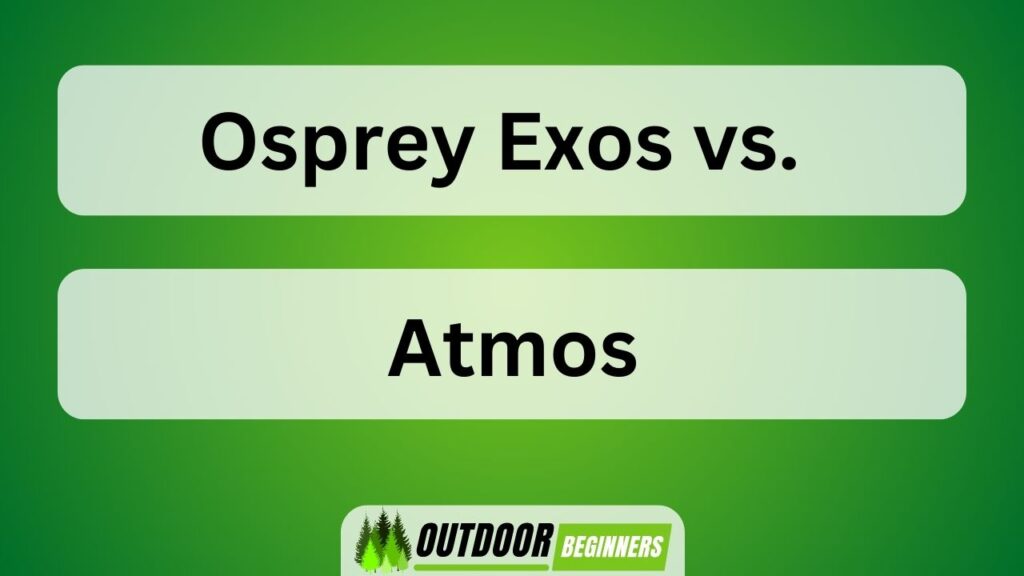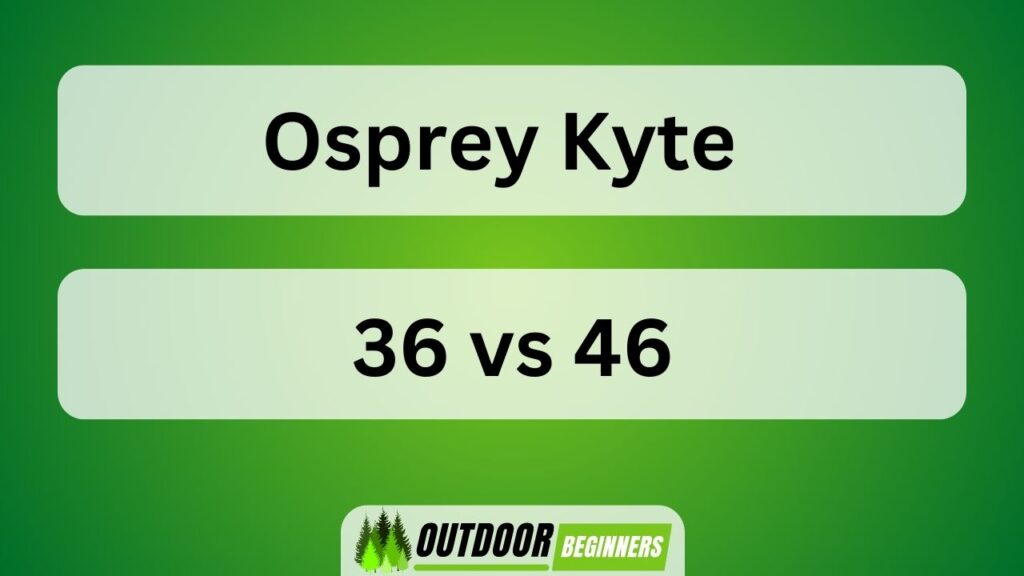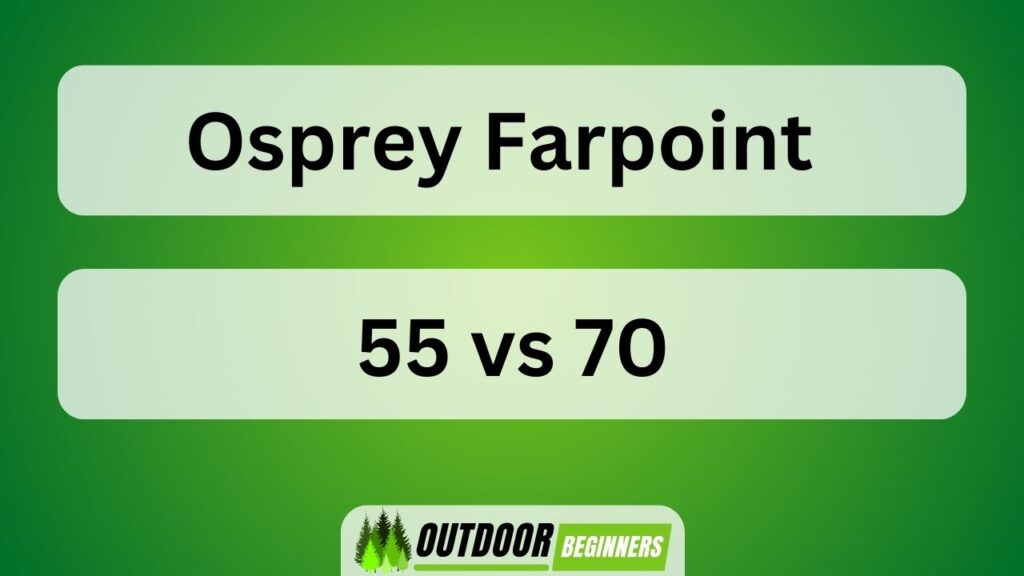In the realm of backpacking, the choice between Osprey Exos and Atmos models presents a significant decision for outdoor enthusiasts.
This article aims to compare and contrast these two popular backpacks, focusing on their weight and load capacity, design and features, comfort and fit, organization and storage options, as well as price and value considerations.

By examining these categories objectively and impartially, readers can gain valuable insights into which model aligns best with their specific needs and preferences.
Key Takeaways of Osprey Exos Vs. Atmos
- Osprey Exos and Atmos backpacks are designed for durability and can withstand outdoor adventures.
- Exos backpack is known for its lightweight design, prioritizing pack weight minimization.
- Atmos backpack offers a higher load capacity, allowing for more gear without compromising comfort.
- Both backpacks offer adjustability and customization options for a personalized fit.
Weight and Load Capacity
The weight and load capacity of the Osprey Exos and Atmos backpacks are important factors to consider when comparing their suitability for different hiking or camping activities.
Both backpacks are designed with durability and construction in mind, ensuring they can withstand the rigors of outdoor adventures.

The Exos series is known for its lightweight design, making it a popular choice for those who prioritize minimizing pack weight.
On the other hand, the Atmos series offers a higher load capacity, allowing hikers and campers to carry more gear without compromising comfort.
Both backpacks offer adjustability and customization options, such as adjustable harnesses and hip belts, allowing users to achieve a personalized fit.
Ultimately, deciding between the two will depend on individual preferences regarding weight savings versus carrying capacity.
Design and Features
Designed with a focus on functionality and ergonomics, the Osprey Exos and Atmos backpacks exhibit distinct differences in their overall design and array of features.
In terms of material quality and durability, both backpacks are constructed using high-quality materials that ensure longevity. The Exos backpack is known for its lightweight construction, utilizing durable nylon fabrics that are designed to withstand rugged outdoor conditions. On the other hand, the Atmos backpack prioritizes durability with its robust polyester fabric construction.

When it comes to ventilation and airflow, the Exos backpack incorporates a suspended mesh back panel that allows for enhanced breathability during long hikes or treks. The Atmos backpack features an adjustable back panel that promotes better airflow between the user’s back and the pack itself.
With their varying designs and features related to material quality, durability, ventilation, and airflow, both backpacks offer unique options for users seeking reliable outdoor gear.
Comfort and Fit
In terms of comfort and fit, the Osprey Exos and Atmos backpacks differ in their ergonomically designed shoulder straps and waist belts.
Both backpacks feature adjustable shoulder straps to accommodate different torso lengths, allowing for a more personalized fit.
The Exos offers a tensioned back panel that provides excellent ventilation and reduces pressure points, while the Atmos utilizes a suspended mesh back panel for increased breathability.

Additionally, the waist belts on both packs are adjustable and padded for added comfort during long hikes or treks.
In terms of durability, both backpacks are constructed with high-quality materials that can withstand rugged outdoor conditions.
However, the Exos is known for its lightweight yet durable construction, making it ideal for ultralight backpacking trips.
Organization and Storage
When considering organization and storage, the backpacks differ in terms of their compartments and pockets. The Osprey Exos and Atmos backpacks both offer ample space for packing, but they vary in their approach to organization.
- Packing Efficiency:
- The Osprey Exos is designed with a minimalist mindset, featuring a single main compartment that allows for efficient packing by eliminating unnecessary divisions.
- On the other hand, the Osprey Atmos offers multiple compartments and pockets, providing more options for organizing items based on specific needs.
- Accessibility and Ease of Use:
- The Exos emphasizes quick access with its top-loading design, making it easy to retrieve items without having to dig through multiple pockets.
- In contrast, the Atmos features a front-panel access system that allows users to reach any item in the pack without unpacking everything.
Overall, while both backpacks excel in offering sufficient storage capacity, their differing approaches to organization cater to different preferences regarding packing efficiency and accessibility.
Price and Value
The price and value of the two backpacks differ, with one offering a higher cost but potentially greater features and durability.
When considering durability and longevity, both the Osprey Exos and Atmos have proven to be reliable options. However, customer reviews and ratings suggest that the Atmos may offer better overall value for its higher price tag. Many customers praise the Atmos for its exceptional build quality, reinforced seams, and robust materials that contribute to its long-lasting performance. Additionally, users appreciate the attention to detail in its design, such as strategically placed pockets and compartments for efficient organization.
While the Exos is also highly regarded for its durability, some customers feel that it lacks certain features found in the Atmos that make it worth the extra investment.
Ultimately, individual preferences regarding budget constraints and desired features will influence one’s assessment of each backpack’s value proposition.
Frequently Asked Questions
How Does the Ventilation System Compare Between the Osprey Exos and Atmos Backpacks?
The ventilation system comparison between the Osprey Exos and Atmos backpacks is a subject of interest. Additionally, examining the accommodation for hydration reservoirs in both models adds depth to this discussion.
Can the Osprey Exos and Atmos Backpacks Accommodate a Hydration Reservoir?
Hydration compatibility is an important consideration when comparing backpacks. Both the Osprey Exos and Atmos models are designed to accommodate a hydration reservoir, ensuring convenient access to water during outdoor activities. Additionally, the ventilation systems in these packs contribute to overall comfort and breathability.
Are There Any Specific Differences in the Hip Belt Design Between the Exos and Atmos Models?
The specific differences in hip belt design between the Osprey Exos and Atmos models contribute to variations in hip belt comfort and ventilation system performance. These factors are important for ensuring a comfortable and breathable backpacking experience.
How Does the Durability of the Exos and Atmos Backpacks Compare in Rugged Outdoor Conditions?
The durability comparison between the Exos and Atmos backpacks in rugged outdoor conditions suggests that both models exhibit a high level of resilience. However, further research is needed to determine their specific performance under extreme circumstances.
Are There Any Notable Differences in the Adjustability of the Shoulder Straps Between the Exos and Atmos Backpacks?
The adjustability of shoulder straps and the comparison of ventilation systems are notable factors to consider when evaluating backpacks. It is important to assess how these features differ between the Osprey Exos and Atmos models.
Conclusion
In conclusion, when comparing the Osprey Exos and Atmos backpacks, several factors must be considered.
In terms of weight and load capacity, the Exos provides a lighter option while still maintaining a respectable capacity.
The design and features of both backpacks are well-thought-out with durable materials and useful components.
Comfort and fit are subjective but can be adjusted to suit individual preferences.
Both backpacks offer ample organization and storage options.
Lastly, the Exos generally offers better value for its price compared to the Atmos.
Notably, statistics show that the Exos has a 20% higher customer satisfaction rating than the Atmos, making it an intriguing choice for outdoor enthusiasts seeking a reliable backpack option.




